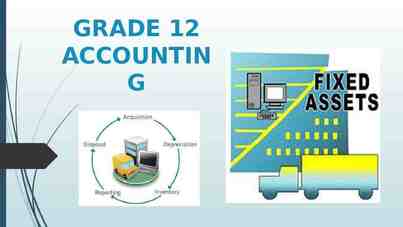Simplified Risk Management Planning for
31 Slides1,001.50 KB
DOT Simplified Risk Management Planning for Project facilitator date 1
Risk Management Historically, many projects, especially if complex, experience poor “performance” exceed cost and schedule estimates more disruption and less longevity than planned Often due to unanticipated problems (invalid assumptions), which possibly could have been anticipated and then planned for Formal risk management 2
Risk Management Process Project Scope/Strategy/ Conditions Risk Management Implementation Structuring Risk Management Planning Risk Identification Risk Analysis Risk Assessment Ref. Guide for the Process of Managing Risk on Rapid Renewal Projects 3
Objectives Identify, assess, evaluate, and rank all significant project performance risks and opportunities (“risks”) Identify, evaluate, and plan potential risk-reduction actions to cost-effectively reduce key risks (and exploit key opportunities) improve performance “Risk” definition relative to project “base” total base risk possible “event” performance impacts if occurs probability of occurrence 4
Notes on Objectives Establish risk management scope (performance measures, project alternatives, exclusions/scenarios). Per DOT , not evaluating uncertainty in project performance, so that risk assessment: focuses on risk severity and ranking only is expressed in terms of “ratings” or mean values uses previously developed forms/template can be basis for subsequent analysis of project cost and schedule uncertainty (budget/contingency/milestones) First evaluate primary project case , and then quickly evaluate secondary project case(s) , in terms of key differences from primary case 5
Agenda of 2-day Workshop Day Risk management planning overview/scope Project overview (scope, strategy, conditions) Structuring for risk management Risk identification (“brainstorming”, risk register) Day 1 morning – for primary case 1 afternoon – for primary case Risk assessment (e.g., in two concurrent groups) Funding/policy, planning/scoping, environmental, rightof-way/utilities/railroad, contracting Design (prelim/final), construction, O&M, replacement 6
Agenda of 2-day Workshop Day 2 morning – for primary case Present and confirm ranked risk register Risk management planning (e.g., in same two concurrent groups) Day 2 afternoon – for secondary case(s) Identify and assess differences in risks (e.g., in same two concurrent groups) Identify, evaluate and plan changes in risk management (e.g., in same two concurrent groups) 7
Risk Management Process Project Scope/Strategy/ Conditions Risk Management Implementation Structuring Risk Management Planning Risk Identification Risk Analysis Risk Assessment 8
Project Scope, Strategy, Conditions Project team presents overview of project Understand key project elements (use established form): Planned scope and alternatives Planned/current status delivery and funding strategies Conditions significantly affecting project Major assumptions used in performance estimates Latest performance estimates 9
Risk Management Process Project Scope/Strategy/ Conditions Risk Management Implementation Structuring Risk Management Planning Risk Identification Risk Analysis Risk Assessment 10
Structuring Identify “base” project (without risk) Base project defined by (use established forms/template): Simplified project “flow chart” By activities in project flowchart Base schedule Base cost Base disruption Tradeoffs Template does base performance analysis 11
Structuring Standard simplified “flow chart” (on form) for risk identification and assessment for D/B/B or D/B Traditional Design/Bid/Build Env Proc Permits M, Mhrs Time mo Duration 24 mo. mo mo Planning Scoping M, Mhrs M, Mhrs mo Prelim Design M, Mhrs Notes: x lag 1 / / 1,2,3 funding 4 project delivery 5 replacement EnvProc Environmental Process Util, RR Utilities, Railroad / / mo Final Design M, Mhrs 2 E 3 mo ROW, Util, RR M, Mhrs mo Procurement M, Mhrs mo Construction M, Mhrs mo 4 Operations mo 5 M, Mhrs Replacement M, Mhrs / / Cost Disruption 100 million 1 M-hr Assumes one contract package Similar flowchart for D/B. If quantifying performance uncertainty, would need more-detailed flow chart. 12
Risk Management Process Project Scope/Strategy/ Conditions Risk Management Implementation Structuring Risk Management Planning Risk Identification Risk Analysis Risk Assessment 13
Risk Identification Identify, document, and categorize comprehensive and non-overlapping set of risks (including opportunities) to project’s performance e.g., delay in ROW 14
Risk Identification Document risks in “risk register” Categorize risks to help ensure comprehensive and non-overlapping set of risks Categorize by project phase (from standard simplified flowchart) when most likely to occur Planning Scoping Preliminary Design Environmental and permitting Right-of-way, utilities, railroad Final Design Procurement Construction Operations Replacement Funding (design, ROW, construction) 15
Risk Identification Guidance for risk identification: Identify and document all credible issues – think broadly and at appropriate level of detail Brainstorm (use forms/template) 2. Categorize and edit (use forms/template) 3. Refer to checklist (Appendix D in Guide) 1. Don’t debate severity of issues (yet) or prematurely “screen” issues out Avoid excluding issues, but document if you do Goal is to identify everything that eventually happens (as well as many things that don’t) 16
Risk Management Process Project Scope/Strategy/ Conditions Risk Management Implementation Structuring Risk Management Planning Risk Identification Risk Analysis Risk Assessment 17
Risk Assessment Adequately but efficiently describe and assess the severity (likelihood and impact magnitude) of each risk (and opportunity) in the risk register Per DOT , not evaluating uncertainty in project performance, only risk severity/ranking. Hence: don’t need to fully quantify uncertainties for efficiency, only assess mean ratings or mean values for risks (use established form/template) (can refine significant assessments later) 18
Risk Assessment Mean-value methods characterize each risk in terms of either: Pre-defined risk “ratings” (e.g., L, M, H) For example, Low probability of a Medium cost impact to ROW and a Low schedule impact to ROW Or, directly in terms of Mean values (probability-weighted averages) For example, 25% probability of a 1 million mean cost increase to ROW and a 3-month mean delay to ROW 19
Risk Assessment - Ratings If use ratings (which are quicker, but less accurate): 1. Define risk factor rating scales in terms of ranges of values (probabilities, cost dollars, schedule time, disruption time) Impacts if Event Occurs Rating VH H M L VL -VL -L -M -H -VH Base Change to Affected Activity Direct Cost (uninflated million) Change to Affected Activity Duration T (months) Low end of range High end of range Low end of range High end of range 25% 12 4 1 0.2 0 -0.2 -1 -4 -12 -12 12 25% 10% 3% 1% 0 -1% -3% -10% -25% -25% Change to Affected Activity Disruption D (million personhours lost) Low end of range High end of range 25% 25% 10% 3% 1% 0 -1% -3% -10% -25% -25% Mhrs Probability of Event Occurring (0 impossible to 1 guaranteed) Severity (equivalent inflated million) Low end of range High end of range Low end of range 0.7 (2:3) 0.4 (2:5) 0.2 (1:5) 0.05 (1:20) 0.0 (0:1) 1.0 (1:1) 25% 25% 10% 3% 1% 0 -1% -3% -10% -25% -25% High end of range 20
Risk Assessment - Ratings If use ratings, cont’d: 2. Assess (by consensus) ratings (e.g., L, M, H) for each risk factor and activity affected by each impact; e.g.: Cost change if risk occurs (e.g., M to ROW) Probability of risk (as defined by impacts) occurring (e.g., M) Impact Rating Risk # C3 Risk D/B Design & Construction Risk Contingency, Escalation & Profit Bidding Climate for NATM Tunnel Construction Materials Escalation R1 ROW Acquisition C1 C2 Cost H to CN Schedule Disruption L to Proc Probability Rating VL to CN VH M to CN VL to Proc VL to CN H M to CN VL to CN L VL to CN M to ROW M to ROW VL to ROW M 21
Risk Assessment - Ratings If use ratings, cont’d: 3. Template determines the mean severity (i.e., change in combined project performance) rating for each risk in terms of equivalent cost in inflated dollars, by combining (via tradeoffs) risk factors Probability Rating Mean Severity Rating (equivalent cost in inflated M) VL to CN VH H M to CN VL to Proc VL to CN H M M to CN VL to CN L Impact Rating Risk # C3 Risk D/B Design & Construction Risk Contingency, Escalation & Profit Bidding Climate for NATM Tunnel Construction Materials Escalation R1 ROW Acquisition C1 C2 4. Cost H to CN Schedule Disruption L to Proc VL to CN M to ROW M to ROW VL to ROW M Prioritize risks per their mean severity rating 22 VL L
Risk Assessment – Mean Values If use mean values directly (i.e., skip the ratings): 1. Assess (by consensus) the mean value for each risk factor and activity affected by each impact; e.g.: Cost change if risk occurs (e.g., 15 million to ROW) Probability of risk (as defined by impacts) occurring (e.g., 25%) 2. Template determines the mean severity value for each risk by combining risk factors (in same way as for ratings) 23
Risk Assessment – Mean Values If use mean values directly, cont’d: Risk # C1 C2 C3 R1 Risk D/B Design & Construction Risk Contingency, Escalation & Profit Bidding Climate for NATM Tunnel Construction Materials Escalation ROW Acquisition 3. 4. Mean Consequences If Risk Occurs Mean Delay to Mean Overall Disruption Mean Cost Schedule (user lost(uninflated M) (months) hours) Probability of Occurrence Mean Severity (in Equivalent cost, Inflated M) (escalation 10%, 1mo delay 6M) 75 to CN 1.0 to Proc 0 80% 70.8 20 to CN 0.5 to Proc 0 50% 12.5 12 to CN 15 to ROW 0.5 to CN 3.0 to ROW 0 0 10% 25% 1.6 9.6 Prioritize the risks per their mean severity values (in equivalent cost in inflated dollars) Template also determines sums of mean risks, by category and for project – however, use with caution! 24
Risk Assessment - Prioritization Risk prioritization based on mean severity values: Unmitigated Mean Severity (in equivalent inflated million) Risk Event 0.0 0.1 0.2 0.3 0.4 0.5 CP1 Uncertainty in constructi SC6 Provide new lighting thro RU8 QDOT helps City pay for w RU3 Unwilling sellers RU1 Uncertainty in ROW inflat RU2 Accelerating pace of deve CN4 Unable to construct inter CP2 Uncertain D/B contracting 25 0.6 0.7
Risk Assessment For efficiency, assess risks by category / project phase in two concurrent groups, e.g.: Group 1 Funding and policy Planning and scoping Environmental and permitting Right-of-way, utilities, railroad Contract procurement Group 2 Design (preliminary and final) Construction O&M Replacement 26
Risk Management Process Project Scope/Strategy/ Conditions Risk Management Implementation Structuring Risk Management Planning Risk Identification Risk Analysis Risk Assessment 27
Risk Management Planning Identify, evaluate, and plan potential actions to cost-effectively, proactively reduce key risks (and exploit key opportunities) Also, but out of current risk management scope: Establish and manage contingency (allowance and recovery plans, to reactively cover collective residual risks) Establish organizational structure and resources to implement plan (include monitor and update) 28
Risk Management Planning Start with high-priority risks (and opportunities) e.g., ROW delay Identify potential, specific actions to reduce (exploit) e.g., advance ROW acquisition Assess implementation impacts for each action e.g., additional 1.0M to ROW Assess effectiveness of each action, in terms of its mean changes to one or more risk factors: Schedule, cost and/or disruption impact if risk occurs e.g., reduce schedule impact to ROW in ½, from 3 to 1.5 months Probability of occurrence e.g., reduce in ½, from 50% to 25% 29
Risk Management Planning Template determines cost-effectiveness of each action Select and subsequently plan cost-effective actions Template also determines sums of mean mitigated risks, by category and for project – however, again, use with caution! For efficiency, identify and evaluate potential actions by category / project phase in same two concurrent groups as for risk assessment 30
Risk Management Process Project Scope/Strategy/ Conditions Risk Management Implementation Structuring Risk Management Planning Risk Identification Risk Analysis Questions? Risk Assessment 31




































